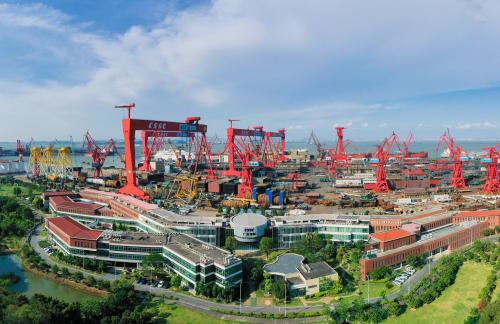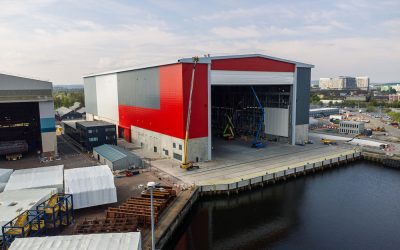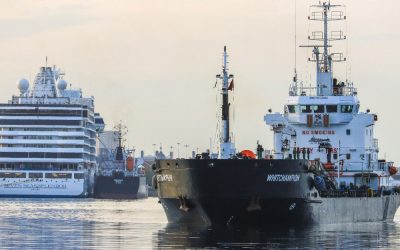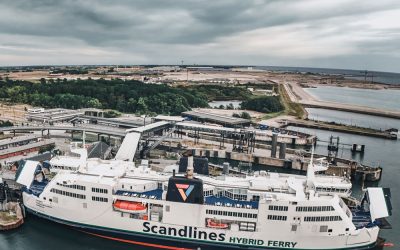Guangzhou Shipyard International (GSI) made headlines in April when it began sea trials with its latest newbuilding, the 49,999dwt tanker Stena Pro Patria, the first methanol-fuelled ship to be built in China.
After nearly four weeks and 3,000 miles of tests, as this issue went to press the ship was due to be handed over to Proman Stena Bulk, a joint venture between Sweden’s Stena Bulk AB and Switzerland-headquartered Proman. Two sisters are due to be delivered later this year and three more have been ordered to the same design.
GSI has already established itself as a prolific builder of dual-fuelled ships, with 32 such vessels among its references, including its current orderbook. Yet even though it has gained experience from building LNG and LPG capable vessels building these methanol-fuelled ships “is a massive achievement for all parties involved”, said the yard’s vice president William Zhou in a statement to mark the start of sea trials.
“GSI is absolutely committed to leading innovation in alternative fuelled ships and these [newbuildings] can go a long way in showing how methanol can be deployed safely and at relatively low cost”, he added.
Speaking to The Naval Architect after the trials had ended, Mr Zhou comments they had taken five times as long as normal – 25 days instead of the usual five – which he says underlined the challenge presented by this first ship to use methanol technology. The additional time was spent tuning all the various systems to ensure they were all working at their best, he explains. Sea trials on the remaining ships in the series will not take so long, he adds.
Supply chains and safety
Despite being familiar with dual-fuelled tonnage, building this first ship for methanol propulsion required some changes in the yard’s established routines, in particular its supply chains, to source the specific systems needed for the new propulsion and fuel arrangements. For example, different pumps and automation controls were needed.
As a result of its experience of sourcing equipment for these ships, its newly-formed Marine And Technology Research Centre (see ‘Research team’ box) is planning to design and produce a methanol fuel oil supply unit. “We need to control costs and provide a good product to the market, so we decided to design and even supply the system”, Zhou explains.
It has been safety-related factors that have formed the main area of yard investment, specifically prompted by the move into methanol-fuelled ship construction. Because it is a new fuel to the marine sector, “people are not as familiar with its characteristics” as those who use it in shore-based industries, Zhou says. So being safety-conscious “is very important for people handling the new fuel on board, during bunkering and during commissioning”.
Design innovation
As far as the ship design and construction was concerned, compared with a single-fuel ship, the location of the methanol storage service tanks had to be considered and the engine room layout had to be arranged to suit such requirements as double-walled piping and ventilation.
But “the most outstanding difference is of course the main engine”, along with its methanol supply system, Zhou says. And because methanol is a low-flashpoint fuel, “the whole system required a serious third-party risk assessment”.
GSI designed the ship and the risk assessment Zhou refers to was carried out by DNV Maritime Advisory, specifically to review the methanol fuel system’s design to confirm that it met the requirements set out in the International Code of Safety for Ships Using Gases or Other Low-Flashpoint Fuels (known as the IGF Code).
Yet despite these potential risks, “methanol-fuelled ships systems are less complicated than those of LNG and LPG-fuelled vessels”, Zhou tells TNA, echoing a comment he had made at the start of the sea trials when he observed that “these ships can go a long way in showing how methanol can be deployed safely and at relatively low cost.”
His comparison is founded not only on its latest newbuilding project but on extensive earlier investigations. “As soon as classification societies drafted rules on using methanol as fuel, GSI began to get involved,” Zhou says. “We did research on methanol in advance and communicated with equipment manufacturers and class,” which enabled it to take on this first Chinese-built methanol-fuelled ship, “and no one has followed us yet,” he adds.






